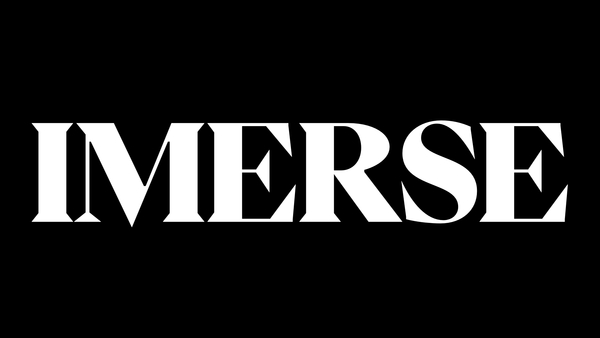The Château de Chantilly: The Mystery of the Rose Diamond and La Joconde Nue (The Naked Mona Lisa)
This well-preserved residence is home to the flawless treasures of a nineteenth-century prince, Henri d’Orléans, Duke of Aumale, son of King Louis-Philippe I. After the course of his destiny changed in 1848, the prince devoted his life to amassing an exceptional art collection for France.
Christian Razel of Imerse conducts an exclusive interview with Nicole Garnier-Pelle, General Curator of Artistic Heritage in charge of the Musée Condé at the Château de Chantilly.
Christian Razel: What is unique about the Château de Chantilly?
Nicole Garnier: Chantilly is a museum that was bequeathed to France by a great collector and historian. The heir of the Bourbon-Condé family’s immense fortune and the Chantilly estate, the Duke of Aumale (1822–1897) amassed the second-largest collection of old paintings in France after the Louvre, according to Pierre Rosenberg.
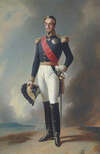
Henri d’Orléans, Duke of Aumale (1822–1897)
by Franz Xavier Winterhalter. Chantilly, Musée Condé © RMN-Grand Palais (Chantilly estate)
The life of the prince was turned upside down by the fall of his father, King Louis-Philippe I, during the revolution in 1848 that abolished the monarchy. At the age of 30, the duke had to go into exile in London for over 20 years. Forced into inaction, the duke set about expanding his collection.
He acquired works that had once belonged to members of his family and bought masterpieces of French art that had been transported out of France. In 1854, the duke acquired in London the painting The Massacre of the Innocents by Nicolas Poussin, which notably inspired The Charnel House by Pable Picasso. In 1856, the most beautiful manuscript in the world, The Very Rich Hours of the Duke of Berry, dating from around 1410, was found by the duke in Italy. His exceptional collection also contains over 900 photographs, including Les Marines (Seascapes) by Gustave Le Gray, highly significant drawings, and all kinds of objets d’art.
During his 23 years of exile, his motto was “I will await my return to France.”
Two-thirds of the château had been destroyed after the French Revolution in 1798. The duke partly reconstructed and refurbished it when he returned to Chantilly in 1871, work that was informed by the history of his family, the Princes of Condé. Galleries were created to exhibit his precious collections. These represented the height of luxury. Masterpieces of the Italian Renaissance, including Portrait of Simonetta Vespucci by Piero di Cosimo, were exhibited in the Rotunda gallery. The Santuario was conceived as a showcase for two works by Raphael, Three Graces and the Orléans Madonna. He created a Reading Room to accommodate the 13,000 works in his collection, including 1,600 precious manuscripts.
The French formal gardens commissioned by Louis de Bourbon, known as the Great Condé, and designed by André Le Nôtre in the seventeenth century were reconfigured. The Hameau (hamlet) in the Anglo-Chinese garden, which predates Marie-Antoinette’s Hameau in Versailles, was restored.
But upon his return to Chantilly, the young prince was a widower and had lost all his children.
His collections at Chantilly would be his legacy, the story of his life, his family tree, the work that he wished to protect from the vagaries of current affairs.
With no direct descendants, he left the Chantilly estate to the Institut de France in 1886. His will stated that the Musée Condé should be opened to the public after his death: the château, the precious collections, and the 115-hectare park. The presentation of the masterpieces in the château must not be altered and the collections cannot be loaned. In accordance with his wishes, the château looks much like it did in the nineteenth century. Upon entering the prince’s residence, you expect the prince himself to welcome you.
What is the mystery of the Rose Diamond?
Louis XIV gave it to his cousin Louis de Bourbon, Prince of Condé, known as “the Great Condé,” as an acknowledgment of his important victory in the Battle of Rocroi in 1643. Written evidence of the rose diamond was found in the archives of the Château de Chantilly when an inventory was taken in 1740 after the death of the Duke of Bourbon.
This diamond has its own identity. There is an irregularity on one side of the pink stone. Passed down from Prince of Condé to Prince of Condé, it survived the revolution by traveling all over Europe under the protection of the Condés’ anti-republican army. The Duke of Aumale inherited it along with Chantilly estate. It has not been on public display since 1926.

Louis de Bourbon (1621–1686), known as the Great Condé, in front of a representation of the Battle of Rocroi, by Justus van Egmont (1601–1674) © RMN-Grand Palais (Château de Versailles) / Gérard Blot

The Rose Diamond. Chantilly, Musée Condé © RMN-Grand Palais (Chantilly estate) / Michel Urtado
What were the results of the scientific analyses carried out by the Center for Research and Restoration of Museums of France (C2RMF) on the Joconde Nue (The Naked Mona Lisa)?
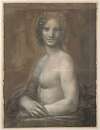
La Joconde Nue (The Naked Mona Lisa).
Chantilly, Musée Condé © RMN-Grand Palais (Chantilly estate) / Michel Urtado
The duke, in exile in London, relied on his friends’ help to make purchases in France. He placed a lot of trust in Baron Henri de Triqueti, who presented him with the great charcoal drawing of La Joconde Nue (The Naked Mona Lisa), also known as Mona Vanna, by Leonardo da Vinci. She is in almost the same pose as the famous Mona Lisa in the Louvre Museum. The nude represented ideal beauty in ancient Greece. The owner of the work wanted to sell it to the Louvre, but the museum did not have the budget for it. The duke acquired it in 1862. The transport company Chenue delivered it to England from France.
Upon moving back to his Château de Chantilly in 1875, the duke placed La Joconde Nue in the Rotunda, located at the center of the Gallery of Painting. For conservation reasons, the drawing was taken down after his death and placed in storage in the Musée Condé.
On the occasion of the 500th anniversary of da Vinci’s death, the museum had the drawing examined for the first time in 2017 by the C2RMF, whose workshops are situated under the Louvre Museum.
After two years of research, art historians and scientists succeeded in proving that this drawing is not a copy, but an original work completed in Leonardo da Vinci’s workshop in around 1503, likely with the participation of da Vinci himself. This drawing would have been made with “Mona Lisa in mind.” Analyses proved that this preparatory drawing, meant for transferring a composition onto a canvas through a pricking technique, was used by da Vinci’s students for various oil paintings. Eight versions have been identified. One painting can be found in the Hermitage Museum in Saint Petersburg.
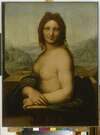
La Joconde Nue © The State Hermitage Museum, 2018
Tell us about the private apartments of the Duke and the Duchess of Aumale.
The private apartments of the Duke and Duchess of Aumale were decorated in 1845–1846 by Eugène Lami in the decorative arts style of the July Monarchy (1830–1848). They are the only princely apartments to have survived to the present day.
Until the end of February 2017, they remained in the state they were in when the Duke of Aumale died. After spectacular restoration work that took two years and an investment of over €2.5 million, the apartments reopened to the public in March 2019.
The décor is eclectic. It evokes different periods in the château’s history. The duchess’s apartment is dedicated to the eighteenth century, the duke’s bedroom pays homage to the Condé family, and the dining room showcases Henri II and the Constable of Montmorency.

The Duchess of Aumale’s room © Sophie Lloyd
What kind of lifestyle did the Duke of Aumale have?
The Stag Gallery was established in the château at the end of the nineteenth century. This Renaissance-style room, with its coffered ceiling, served as a reception and dining room. It was in this room, on Sundays, that the Duke of Aumale hosted the artistic and intellectual elite of his time.
His Sunday breakfasts became the most elegant and high-profile event in high society in Paris. The duke charmed guests with conversation about his collections, his château, and the history of the Princes of Condé. “The rest of us, we speak, but he can really talk,” said Ernest Renan, a fellow member of the Académie Française. The duke delighted in having his “work” admired.
After breakfast, the guests were shown the duke’s treasures and the historical large suites of the château. He showed guests his collections of paintings on display in the Gallery of Painting and his manuscripts, his precious literary works, and his drawings in the Reading Room.
From 1880, Chantilly revived the pomp of the royal court by organizing magnificent receptions. The château recreated the splendors of the era of the Grand Condé, inviting all of the aristocratic elite, including the Queen of Denmark, Empress Elisabeth of Austria, known as Sissi, the King and Queen of Naples, and the Baron and Baroness Alphonse de Rothschild.

The Large Suites—The Gallery of Battles © Sophie Lloyd

The Large Suites—The Gallery of Battles © Sophie Lloyd
What is your next book about?
In the context of the exhibition Figures du siècle de Louis XIV: Portraits gravés de Nanteuil (Figures from the Age of Louis XIV: Portraits engraved by Nanteuil) that we are organizing at the Château de Chantilly for the end of 2019, I am working on a book about the French engraver, draftsman, and pastelist Robert Nanteuil (1623–1678).
[image]
Portrait de Jean-Baptiste Colbert by Robert Nanteuil. Chantilly, Musée Condé © RMN-Grand Palais (Chantilly estate) / René-Gabriel Ojéda
Appointed draftsman and engraver to the king in 1658, Nanteuil was a sought-after artist in the time of Louis XIV, especially among members of the court and great dignitaries of the kingdom. He engraved eleven portraits of the Sun King and fourteen of Cardinal de Mazarin. There are several of his works in the collection at the Musée Condé, including the Portrait of Jean-Baptiste Colbert, which dates from 1676. His skill lay in depicting the character of his models, thereby creating veritable psychological portraits.
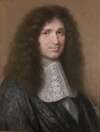
Portrait de Jean-Baptiste Colbert by Robert Nanteuil.
Chantilly, Musée Condé © RMN-Grand Palais (Chantilly estate) / René-Gabriel Ojéda
